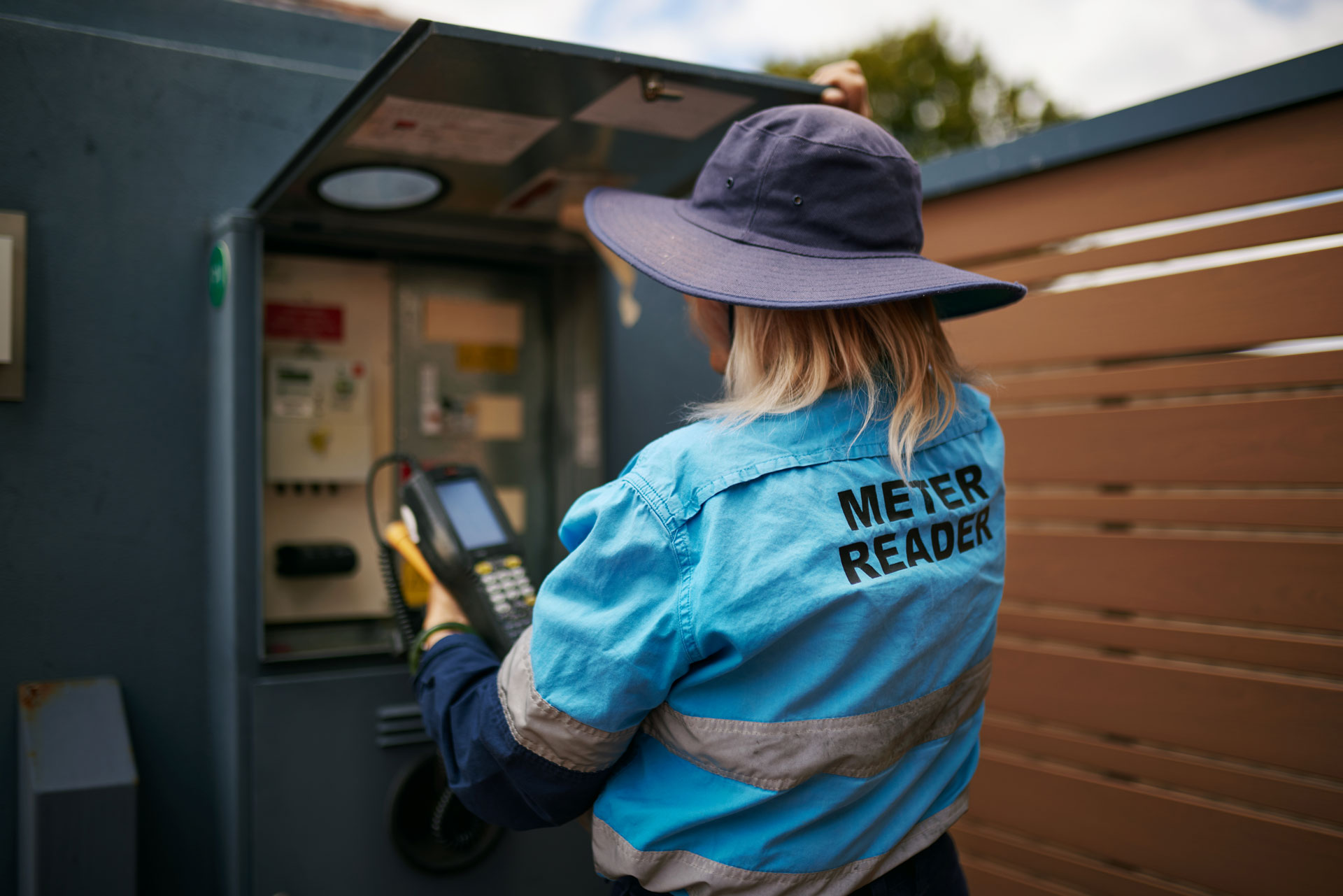
Metering
Find out about electricity meters, how to read your own meter and submit a reading online.
The meter installed on your property reads the electricity you consume, and the electricity you generate.
Our network consists of a number of meter models ranging from older models that have physical, mechanical dials, to the latest digital Advanced Meters, that can read bi-directional flow of electricity over time with precision, detect potential faults, participate in network scale energy management and package that data back to Western Power every half hour, removing the need to access your property to read the meter.
Meter reading guides
Technical progress and the expanding capabilities of electricity revenue meters over the past decade has resulted in there being different meter types active on the network.
Dial meters and electromechanical meters are the easiest to identify due to their mechanical method of displaying consumption. We are working to replace these meters as part of the AMI rollout. Click below to download the guides for these meters.
Electronic meters need to be identified by the meter number so that you can download the correct guide for your meter.
[Image: Meter number >>]
Use the first four digits of the meter number (for example 0540) to which meter you have and then download the correct guide below:
| 00 | 01 | 02 | 03 | 04 | 05 | 06 |
|---|---|---|---|---|---|---|
| 0013 | 0101 | 0200 | 0301 | 0450 | 0510 | 0620 |
| 0021 | 0114 | 0201 | 0333 | -- | 0520 | 0633 |
| 0081 | 0115 | 0213 | 0348 | -- | 0530 | 0640 |
| -- | 0116 | 0233 | 0349 | -- | 0540 | 0642 |
| -- | 0118 | 0248 | 0350 | -- | -- | -- |
| -- | 0134 | 0249 | 0380 | -- | -- | -- |
| -- | 0136 | 0250 | -- | -- | -- | -- |
| -- | 0140 | 0258 | -- | -- | -- | -- |
| -- | 0148 | 0280 | -- | -- | -- | -- |
| -- | 0149 | -- | -- | -- | -- | -- |
| -- | 0150 | -- | -- | -- | -- | -- |
| -- | 0158 | -- | -- | -- | -- | -- |
| -- | 0160 | -- | -- | -- | -- | -- |
| -- | 0177 | -- | -- | -- | -- | -- |
| -- | 0180 | -- | -- | -- | -- | -- |
| -- | 0181 | -- | -- | -- | -- | -- |

Your meter box

Your meter box usually doesn’t just house your meter, it also holds your installations protection devices such as fuses, circuit breakers, and RCDs – safety switches that protect you from electric shocks should something go wrong in your house – your main switch and the main fuse holder that can be used to isolate your property from the network.
<< [Image: typical meter box]
Everything in the meter box belongs to the house, except the meter and the main fuse itself (Service Protect Device) (the holder the fuse sits in is yours too). You may want to protect these important components by fitting your meter box with a lock or padlock. If you do, it will need to be a WAS (West Australian Services) lock that can be opened with a master key, and you’ll need to send us a message with the serial number of the lock.
In a multi-residential site, like an apartment block or complex, you may have your meter box attached to your house, or there’ll be a meter room where all the meters are located. You should have a box in your residence with the RCDs and a remote main switch, but not the meter and main switch. Your strata or building manager must give you access to your meter on request.
Self meter reading
Setting up
Self-Readers provide their electricity consumption – and generation - manually to Western Power via the Self Read Portal, self-read cards or via our phone line.
Why is self-reading an option?
Our meter readers cover the majority of the SWIS but given WA’s massive area there are some properties connected via the network that are too isolated to be visited physically by our meter readers – and also sit outside the current area of Advanced Meter Infrastructure.
In these circumstances, electricity account holders at these properties must become Mandatory Self Readers – as no alternative is available.
Non-mandatory self-readers are those who choose to become self-readers, for a variety of reason, often due to access or site security issues, such as locked gates or dogs on site.
Setting up as a self-reader
To set up as a self-reader you will need to contact your retailer.
You’ll need to check that they have the correct contact details for you as we will send a welcome email pack giving you access to the portal to set up your preferences, assign nicknames to meters and check out the instructions to read your particular meter.
Other considerations
Before becoming a self-reader, it is worth considering that self-readers are not able to participate in DER (Distributed Energy Resources – i.e. Rooftop solar that receives credits for energy fed back to the Grid). This is because the credits from DEBS, the Distributed Energy Buyback Scheme, is time of day dependent and thus can only be determined via AMI or downloaded information from the meter by our readers.
As the AMI network expands, Mandatory self-readers and those non-mandatory readers who have had issues with participation may have their reading status reviewed and be added to Advanced Metering Infrastructure. If this is to happen, we will communicate well in advance to the electricity account holder.
Providing your reads
We’ll notify you via email or SMS when you should provide your read. Once you receive that message you will have 15 business days (3 weeks) to submit your reads before the “Read Window” is closed.
Within this notification is a link to your self-read portal. This gateway is renewed after every Read Window so you must use the link in the latest notification email or SMS.
- Download the guide to the self-read portal [link to be added]
Alternatively, you can use our automated phone line:
Your portal also includes a guide to your particular meter type.
Participation and the Annual Read Obligation
All self-readers agree to participate, that is, they MUST provide readings when the read window is open. If they do not provide actual reads their reads will be estimated.
Under the Metering Code 2012, we have an obligation to gain an actual read on your meter at least once per year. Likewise, under the Small Use Code 2023, your retailer has an obligation to not bill you on non-actual reads for more than 12 months.
Thus, Self-readers have an obligation to provide annual proof of the consumption, via photograph(s) of the meter showing the channels/registers required by their tariff. We usually request this spcial read by SMS. If a self-reader does not comply with this annual read then they may be disconnected from the network for this breach.
Advanced Metering Infrastructure – AMI
Advanced meters are electronic devices that monitor the flow of electricity in and out of the electrical installation at a property.
Being a digital device, they are capable of accurately reading both import and export of electricity and storing that data against the time and date for use by electricity retailers in their billing and crediting customers according to increasingly flexible tariffs.
An advanced meter also monitors safety factors of a network connection, such as comparative current or neutral resistance, in order to give Western Power an indication if a potential fault is noted.
Advanced meters communicate via a flexible network to transmit this data to Western Power. This network is well protected from outside access. This network is also very low power, equivalent to a garage door opener.
Advanced meters have no access to monitor individual devices in your home nor any ability to capture or store personal data.
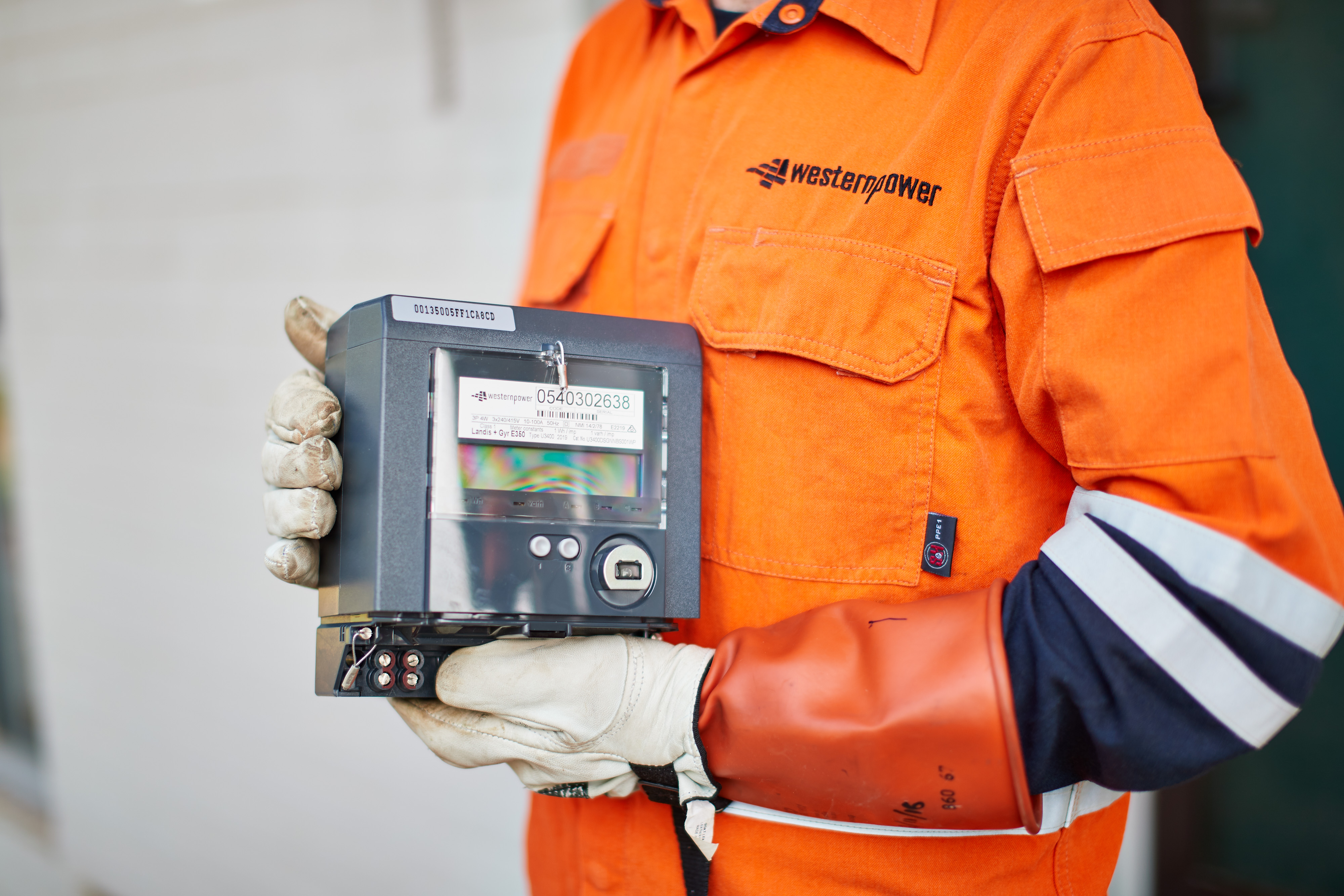
Metering installation and upgrades
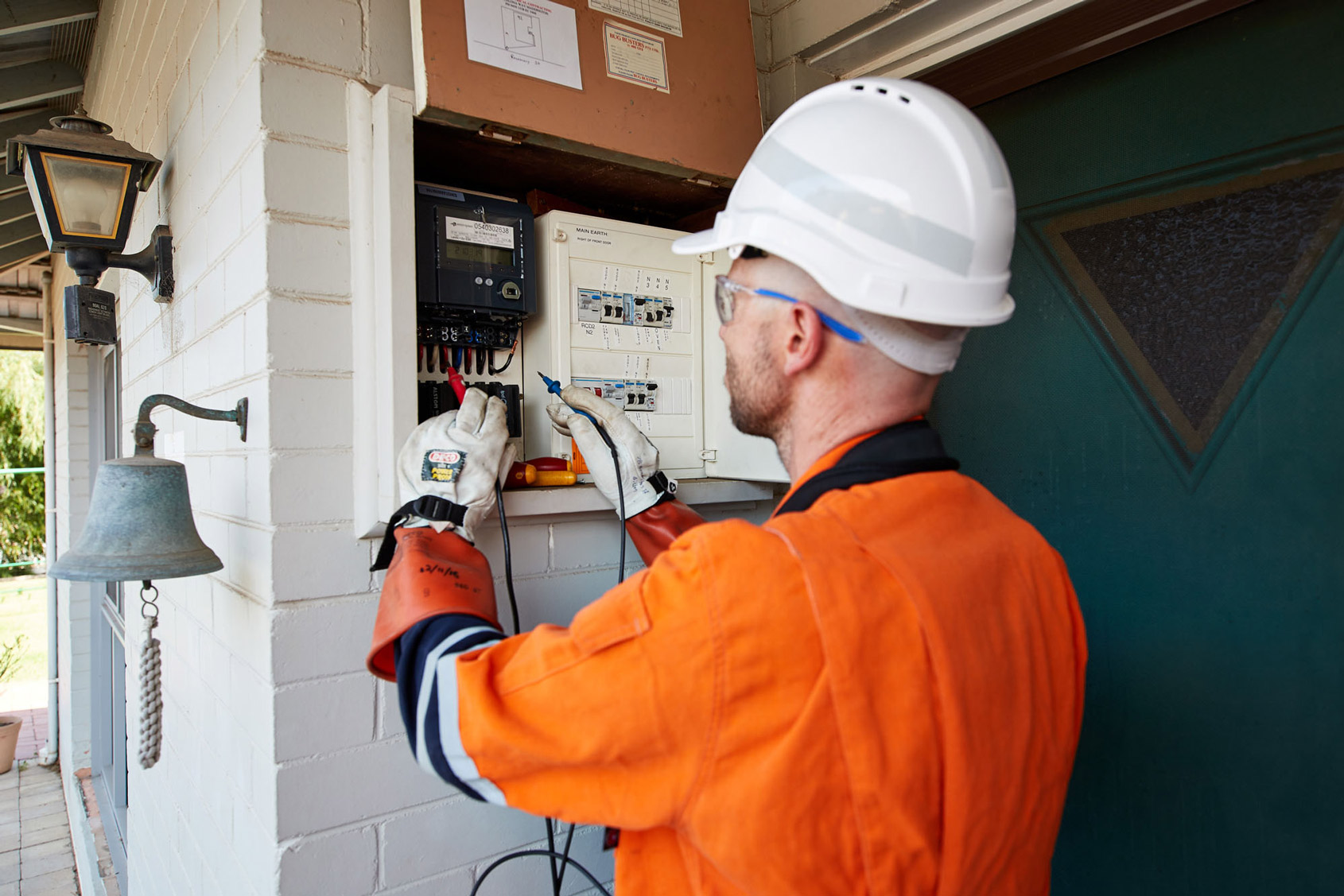
The meter installed at every required electricity connection point in the South West Interconnected Network (SWIN) provides consumption data for electricity retail charges.
Our metering teams are constantly researching and working with manufacturers to ensure that we continue to provide the most accurate reads for retailers – resulting in a variety of paths by which we install, and upgrade existing meters to, the latest models:
New Connections
New connections will always receive the most appropriate meter that is to the current standard and suitable for the installtion. For domestic and small commercial customerrs, a this is the Advanced meter with remote communication capability in AMI suburbs.
Tariff change / request by retailer
If a customer sets up an electricity retail account, using a tariff that cannot be supported by the existing meter, the meter will be replaced with one that is to the current standard and can support the retail tariff .
Replacement of faulty/damaged meters
If a meter is confirmed as faulty or damaged, it will be replaced with one that is to the current standard.
Installation of on-site generation
Installing on-site generation, such as solar panels generally requires a newer model of meter to be installed to support the time of use tariff that is necessary to ensure generation crediting as per the DEBS agreement. If an up-to-date meter is already fitted, it will be reprogrammed.
Meter replacement program
The meter replacement program is a planned program to replace meters to ensure the ongoing accuracy and reliability of the asset. We will send you a letter when the replacement is coming up.
Any meter replacement will require a short power outage. Apart from ensuring access to the meter box there isn’t usually anything that you need to do to prepare for the meter exchange, however, if our crew discovers something that prevents the work going forward you may be given an action required pack detailing work needed by an electrician. This could range from having to replace a main fuse holder to discovering a major wiring fault. In rare cases we identify installations that are deemed unsafe in which case we must isolate it from the network until the fault is rectified.
Meter reading
Meter readings are collected either via on site attendance or via Advanced Metering Infrastructure.
As well as being used for billing, regular meter reads are essential to keep track of electricity usage at your property, sudden increases in usage can indicate failing appliances or even a potentially dangerous issue with your wiring.
Meters that cannot connect via the AMI network must be visually read by our meter readers (or customers can register as a self-reader via their retailer).
Under the Energy Operators (Powers) Act 1979 you have an obligation to provide safe access for our meter reading at all reasonable times. For protection of our readers and your property, we follow strict protocols for accessing your meter:
- Our readers will always announce and identify themselves if someone is present at the premises.
- Our employees and contractors must never climb gates or fences.
We do not access meters located inside a residence, unless someone is home or we have access by way of a master key (this can include using a private key or swipe card located in a lockbox accessed via a master key). - Our readers may not access a property via the backyard without first attempting to notify the customer.
- Our meter readers will not enter a property where a dog has access to the meter.
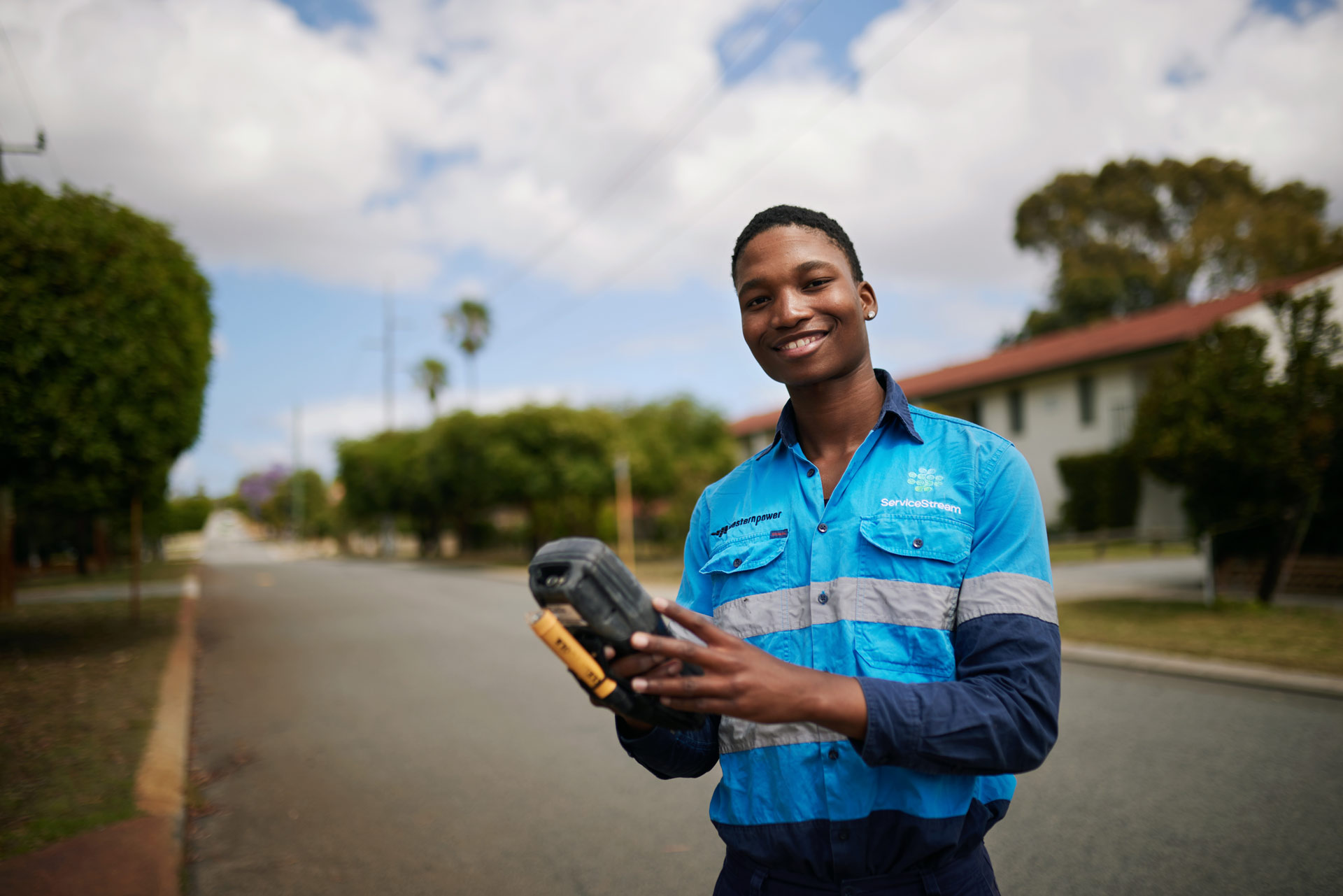
Meter reader safety
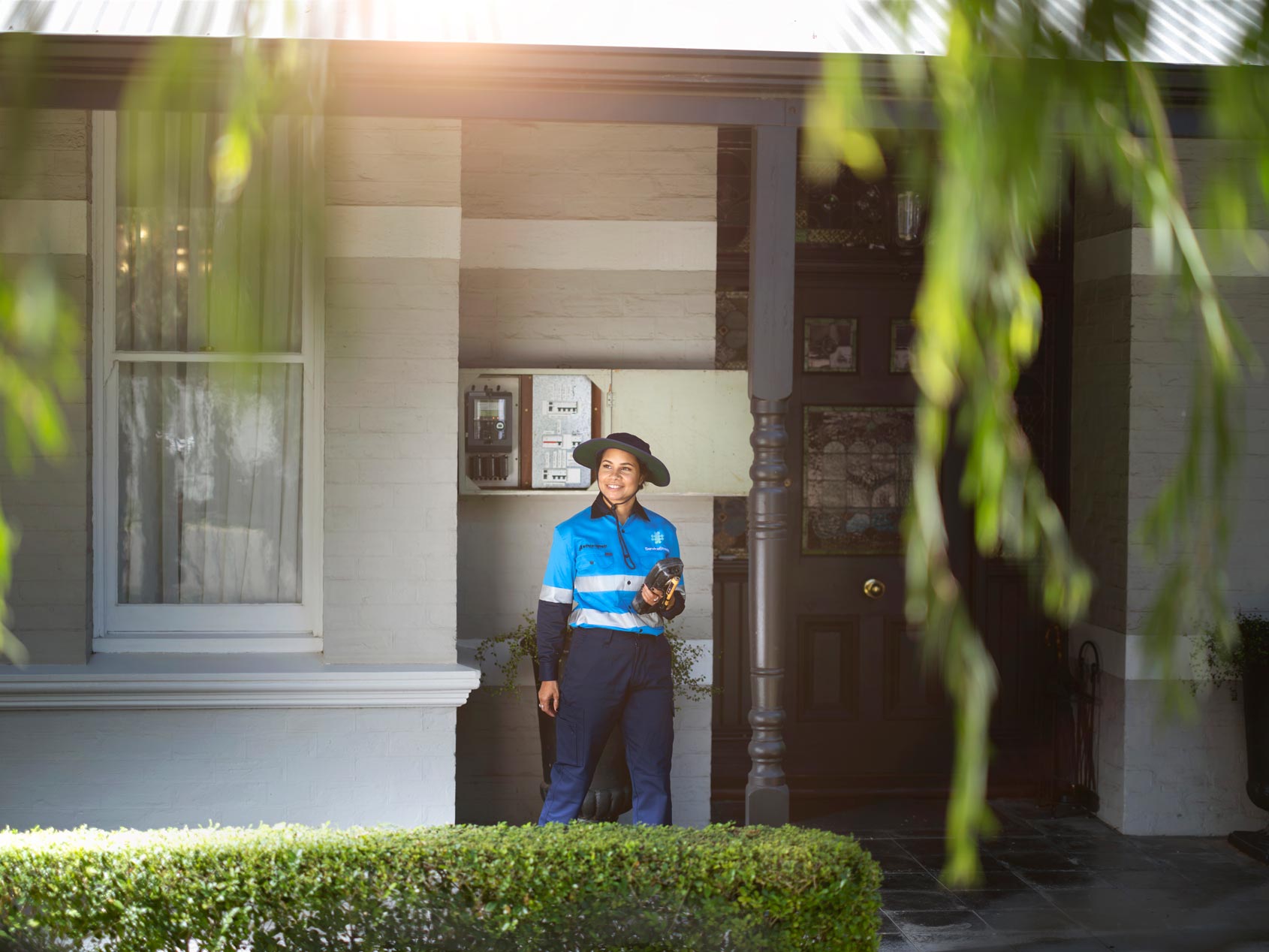
Our meter readers visit the majority of properties in the SWIN on a bi-monthly basis. In visiting so many properties they will face a number of access issues that may impact the safe conduct of their work:
Dogs on the property
While the vast majority of dogs do not represent a danger to our meter readers it is impossible to guarantee that a stranger entering a property where a dog resides will not be attacked, especially if the resident is not home.
We do note if the animal doesn’t have access to the meter, but we do not allow our meter readers to enter your property if you have a dog with access to the meter.
Obstructions to the meter
Anything placed in front of the meter or meter box, will result in an estimated read. For the safety of our employees, and the protection of your property, meter readers are not obligated, or permitted, to attempt to move anything that blocks their access to the meter.
Stuck or locked gates
As above, Meter readers are not expected to force a gate that may be locked or reach over gates that can only be opened from inside. In some circumstances we can be provided with a code for a lock, but it’s better to fit a WAS lock, which can be opened by a series of standard master keys held by all WA services. These are available as fitted locks or padlocks from most locksmiths.
If these situations are resolved after the skipped read, you can let us know via our contact form. If the on-site situation has changed then your next read likely won’t be estimated. If you can’t change the issue with access, you could instead become a self-reader, and provide reads yourself.
Estimated Readings
If a read cannot be obtained from a meter, or the read that is obtained appears to be well outside the range of “normal” for this resident, then the actual consumption figure will be “substituted”.
Substituted reads are estimated using an agreed substitution method.
Unless there has been a major change in how electricity is used by the customer within the last few months the estimated read is generally very accurate.
If the next read is successful, your next bill will be adjusted based on actuals. This may mean the bill is slightly higher or lower than expected. One estimated read is rarely enough to create bill shock, though consecutive estimated reads could result in increasing deviation from the actual consumption.
FAQs
FAQs TBC by Rich B.